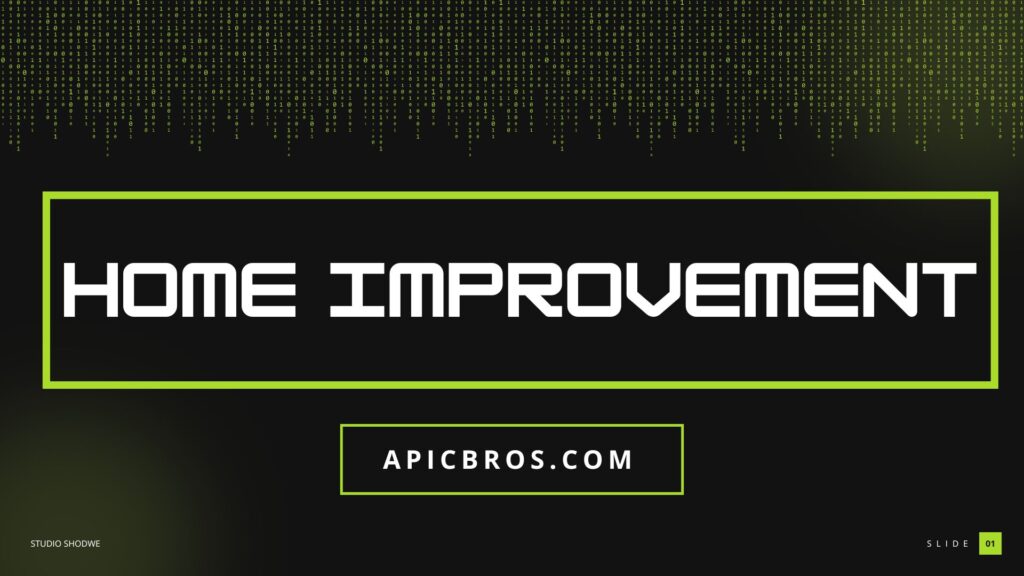Table of Contents

Home Smart and Home Automation: Transforming Your Living Space
In the modern world, the concepts of home smart and home automation are gaining immense popularity. These technologies are designed to make our lives easier, more efficient, and more secure. In this detailed article, we will explore what smart homes and home automation mean, how to start your journey, the best devices for 2024, and much more. Learn More
What is Meant by Smart Home?
A smart home refers to a residence equipped with a variety of devices that can be controlled remotely via a smartphone, tablet, or computer. These devices are connected to the internet, allowing homeowners to manage their home systems from anywhere. The main goal of a smart home is to enhance convenience, comfort, and energy efficiency.
Key Features of a Smart Home:
- Remote Control: Manage devices from anywhere using a mobile app.
- Automation: Schedule tasks to occur automatically, such as turning lights on at sunset.
- Integration: Connect multiple devices to work together seamlessly.
- Energy Efficiency: Monitor and reduce energy consumption through smart devices.
What is Meant by Home Automation?
Home automation is the technology that enables homeowners to control various systems and appliances automatically. This includes lighting, heating, security systems, and entertainment systems. Home automation allows for the programming of devices to operate on a schedule or respond to specific triggers, such as motion detection or time of day.
Benefits of Home Automation:
- Convenience: Automate daily tasks to save time and effort.
- Energy Savings: Optimize energy use with smart thermostats and lighting.
- Enhanced Security: Monitor your home with smart cameras and alarms.
- Increased Comfort: Adjust settings based on personal preferences.
What is the Difference Between Home Automation and Smart Home?
While “smart home” and “home automation” are often used interchangeably, there are key differences:
- Smart Home: This term encompasses the entire ecosystem of connected devices that can be controlled remotely. It includes various technologies and systems that enhance the living experience.
- Home Automation: This term specifically refers to the automation of tasks and processes within the home. It focuses on how devices can work together to perform functions automatically.
How Do I Start Smart Home Automation?
Starting your smart home automation journey can be straightforward. Here are some steps to help you get started:
Steps to Begin Smart Home Automation:
- Assess Your Needs: Identify which areas of your home you want to automate, such as lighting, security, or climate control.
- Choose a Smart Home Hub: A hub acts as the central control point for your devices. Popular options include:
- Amazon Echo
- Google Nest Hub
- Samsung SmartThings
- Select Compatible Devices: Look for smart devices that are compatible with your chosen hub. Consider the following categories:
- Smart Lighting: Philips Hue, LIFX
- Smart Thermostats: Nest, Ecobee
- Smart Security Cameras: Ring, Arlo
- Smart Plugs: TP-Link Kasa, Wemo
- Install and Connect Devices: Follow the manufacturer’s instructions to install the devices and connect them to your hub.
- Set Up Automation: Use the hub’s app to create routines and automation. For example, you can set your lights to turn on at sunset or your thermostat to adjust when you leave home.
The Best Smart Home Devices for 2024
Here are some of the top smart home devices to consider for 2024:
| Device Type | Recommended Products | Key Features |
|---|---|---|
| Smart Speakers | Amazon Echo, Google Nest Audio | Voice control, music streaming, smart home integration |
| Smart Thermostats | Nest Learning Thermostat, Ecobee | Energy-saving features, remote control, learning capabilities |
| Smart Security | Ring Video Doorbell, Arlo Pro | HD video, motion detection, two-way audio |
| Smart Lighting | Philips Hue, LIFX | Customizable colors, remote control, scheduling |
| Smart Plugs | TP-Link Kasa Smart Plug | Remote control, energy monitoring, scheduling |
| Smart Cameras | Wyze Cam, Blink Outdoor | Affordable pricing, cloud storage options, motion alerts |
Role of IoT Devices in Home Automation
IoT (Internet of Things) devices are essential for home automation. They allow different devices to communicate with each other and work together. For example, a smart thermostat can adjust the temperature based on data from a smart weather station. This connectivity enhances the efficiency and functionality of home automation systems.
1: Examples of IoT Devices in Home Automation:
- Smart Sensors: Detect motion, temperature, and humidity to automate responses.
- Smart Locks: Allow remote locking and unlocking of doors.
- Smart Appliances: Refrigerators that can track food inventory and suggest recipes.
2: Role of IoT Devices in Smart Home
In a smart home, IoT devices enable remote monitoring and control of various systems. They provide real-time data, such as energy usage or security alerts, helping homeowners make informed decisions and manage their homes more effectively.
Benefits of IoT Devices in Smart Homes:
- Real-Time Monitoring: Keep an eye on your home from anywhere.
- Data Analytics: Analyze usage patterns to optimize energy consumption.
- Interoperability: Devices from different brands can work together seamlessly.
What is a Smart Home OS?
A Smart Home OS (Operating System) is a platform that integrates various smart devices, allowing them to work together seamlessly. It acts as a central control system, enabling users to manage all their devices from one interface. Examples include:
- Samsung SmartThings: A versatile platform that connects a wide range of devices.
- Apple HomeKit: Allows control of compatible devices through Apple devices.
- Google Home: Integrates various smart devices and offers voice control through Google Assistant.
Areas of Your Home to Automate
You can automate various areas of your home to enhance convenience and efficiency. Here are some key areas to consider:
Front Yard:
- Smart Doorbell: Monitor who is at your door with video and two-way audio.
- Smart Outdoor Lights: Automate lighting based on sunset or motion detection.
Living Room:
- Smart TV: Control your entertainment system remotely and stream content.
- Smart Speakers: Use voice commands to play music or control other smart devices.
Kitchen:
- Smart Refrigerator: Track food inventory and suggest recipes based on available ingredients.
- Smart Oven: Preheat your oven remotely or set cooking times from your phone.
Bedroom:
- Smart Lights: Set lighting to gradually dim for bedtime or wake you up with soft lighting.
- Smart Thermostat: Adjust the temperature for optimal comfort while sleeping.
Bathroom:
- Smart Shower: Control water temperature and flow remotely for a perfect shower experience.
- Smart Mirror: Display news, weather updates, or your calendar while you get ready.
How Much Does It Cost to Automate Your Home?
The cost of automating your home can vary widely based on the devices and systems you choose. Here’s a breakdown of potential costs:
| Item | Estimated Cost Range |
|---|---|
| Smart Speakers | $50 – $300 |
| Smart Thermostats | $100 – $250 |
| Smart Security Cameras | $50 – $500 |
| Smart Lighting (per bulb) | $15 – $60 |
| Smart Home Hub | $50 – $200 |
| Total Home Automation Setup | $1,000 – $15,000+ |
Factors Affecting Cost:
- Number of Devices: More devices will increase the total cost.
- Type of Devices: High-end devices may come with advanced features and higher prices.
- Installation Costs: Some devices may require professional installation.
Does Home Automation Increase Home Value?
Yes, home automation can increase the value of your home. Many buyers are looking for smart home features, which can make your property more attractive on the market. Studies suggest that homes with smart technology can see a return on investment of up to 50% when sold.
Benefits of Home Automation for Home Value:
- Attractiveness to Buyers: Smart features can make your home stand out.
- Energy Efficiency: Homes with smart technology often have lower utility costs.
- Modern Appeal: Buyers appreciate the convenience and security of smart homes.
Tips for Smart Home Automation
- Start Small: Begin with one or two devices and gradually expand your system as you become more comfortable.
- Choose Compatible Devices: Ensure that your devices work well together and can connect to your hub.
- Prioritize Security: Invest in smart security systems to protect your home and family.
- Utilize Energy Management: Use smart devices to monitor and reduce energy consumption.
- Regularly Update Software: Keep your devices updated to ensure optimal performance and security.
Smart Home Security Systems
Smart home security systems enhance safety by allowing homeowners to monitor their property remotely. Features may include:
- Smart Cameras: View live footage from your smartphone and receive alerts for unusual activity.
- Smart Locks: Lock and unlock doors remotely, and grant access to guests without needing physical keys.
- Motion Sensors: Get alerts when movement is detected in or around your home.
Benefits of Smart Home Security:
- Peace of Mind: Monitor your home from anywhere at any time.
- Remote Access: Control your security systems while you’re away.
- Integration with Other Devices: Connect with smart lights and alarms for enhanced security.
Tips for Security
- Use Strong Passwords: Protect your devices with secure passwords that are difficult to guess.
- Update Firmware Regularly: Regularly update your devices to fix security vulnerabilities and improve functionality.
- Enable Two-Factor Authentication: Add an extra layer of security to your accounts by requiring a second form of verification.
- Set Up Alerts: Configure your security system to send alerts to your phone for any suspicious activity.
- Regularly Review Security Footage: Check recorded footage periodically to ensure your system is functioning correctly.
Future of Smart Home Automation
The future of smart home automation looks promising. As technology advances, we can expect more intuitive devices that learn from our habits and preferences. Integration with artificial intelligence (AI) will enhance the capabilities of smart homes, making them even more efficient and user-friendly.
Trends to Watch:
- Increased AI Integration: Devices that learn your preferences and adjust automatically.
- Enhanced Interoperability: More devices from different brands work seamlessly together.
- Focus on Energy Efficiency: Smart homes that prioritize sustainability and energy savings.
- Health Monitoring: Devices that track health metrics and provide alerts for potential issues.
Conclusion
Smart homes and home automation are transforming the way we live by integrating technology into our daily routines. By automating tasks and connecting devices, homeowners can enjoy increased convenience, security, and energy efficiency. Whether you are just starting or looking to expand your smart home, understanding these concepts will help you make informed decisions and enhance your living experience. Embrace the future of home automation and enjoy the many benefits it brings!
Explore More Article Click Here



